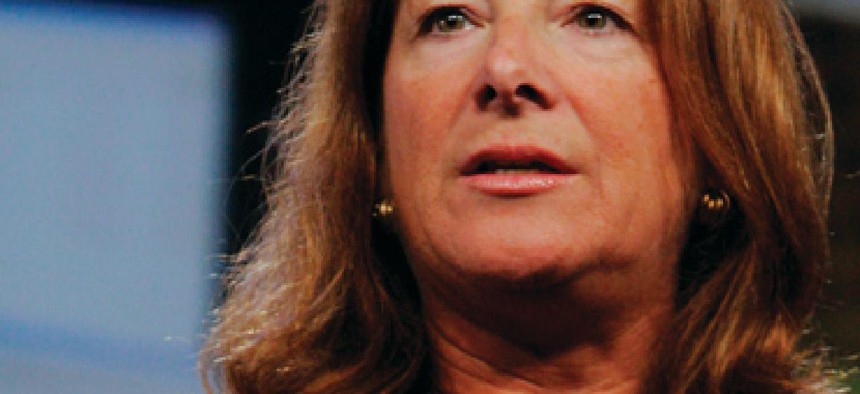Geospatial director: Make your data accessible

The National Geospatial-Intelligence Agency does not routinely share its information with the public, but after a recent natural disaster, the agency opened up its data with positive results.

NGA Director Letitia Long
National Geospatial-Intelligence Agency Director Letitia Long has a message for federal agencies: If you want to realize the full value of your data, make it accessible to the public, other agencies and outside organizations.
"Meta-tag your data, expose your data, make it accessible," she said at ESRI's geospatial conference in Washington D.C., on Feb. 11. "If it is not out there for others to use, you're not realizing the full potential and value of data."
The rapidly growing NGA collects, stores and disseminates geospatial information for the rest of the intelligence community. The increasingly important agency has doubled in size in the past 10 years, and its budget last year approached $5 billion.
NGA does not routinely share its information with the public, but after a recent natural disaster, the agency opened up its data with positive results.
When Typhoon Haiyan slammed into the Philippines in November 2013, it killed more than 6,000 people and left an environment unrecognizable to the disaster teams that first entered the area.
Long said the agency collaborated with international disaster-response partners and, via an online portal called The Globe, shared data from NGA's Map of the World -- an internal platform that is home to all geo-intelligence and multisource content in the agency.
"We created an event page on an unclassified website that enabled international disaster response teams to access data, submit requests and share that data," Long said. "It allowed our partners to see and use damage assessments as they were created and to update them."
In response to Typhoon Haiyan, Long said, NGA took the groundbreaking step of sharing data with the International Red Cross in conjunction with the State Department and the U.S. Agency for International Development. NGA also shared all the commercial imagery it had with the international organizations and governments that needed it.
"Their field teams downloaded data on smartphones and [other mobile] devices, and updated those assessments as they worked," Long said. "As users, they were also producers, serving information back out to the broader community."
She said the data sharing had a major impact on the Philippine government and the efforts of first responders and disaster-response teams after the typhoon. In addition, the data had some unexpected users.
The Federal Emergency Management Agency made information available to responders through a geo-platform map service, and its partners picked up the data. Soon, another agency used the data to create multilayered maps that were distributed to the United Nations community and partners across Asia. Ultimately, Long said, all those users helped responders on the front lines.
"I'm sure that data is still being used in ways I don't even know," she said. "It shows how effective integration can be."
NEXT STORY: Why FedRAMP should matter to you






